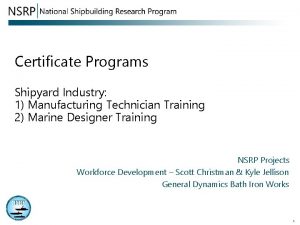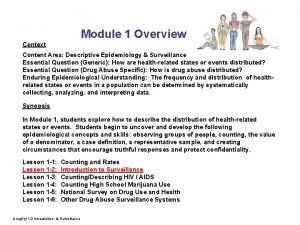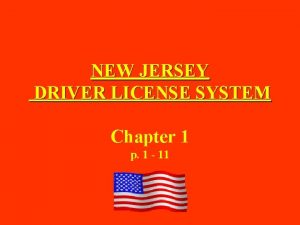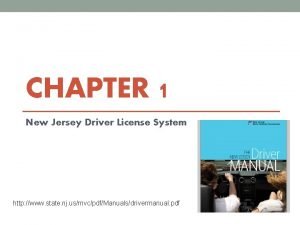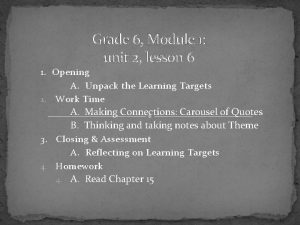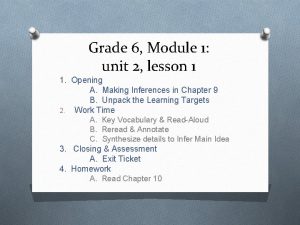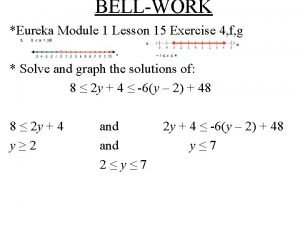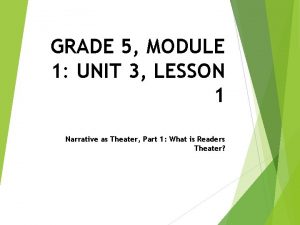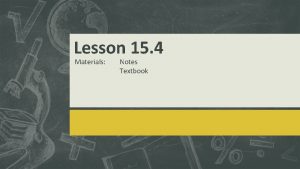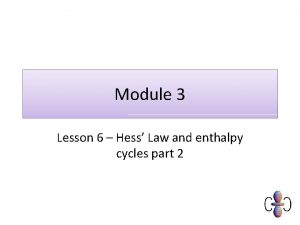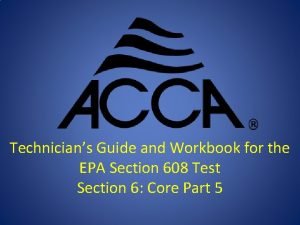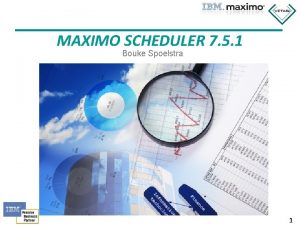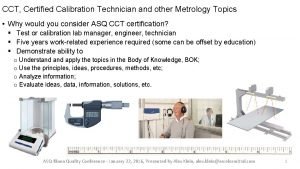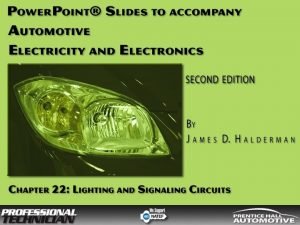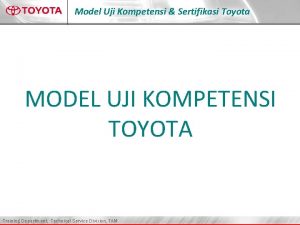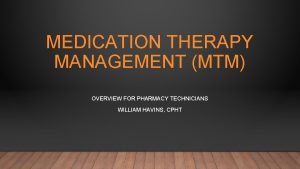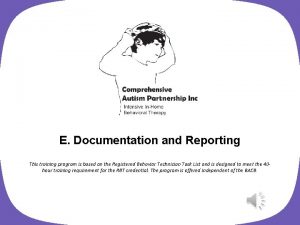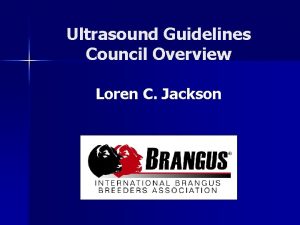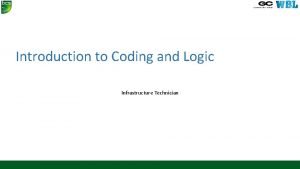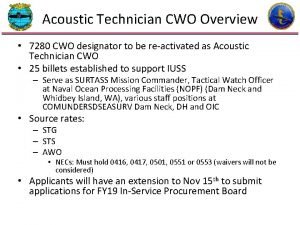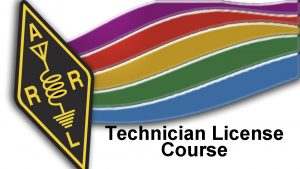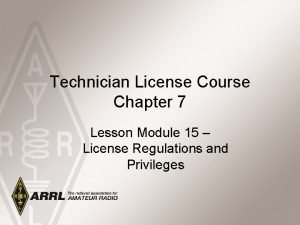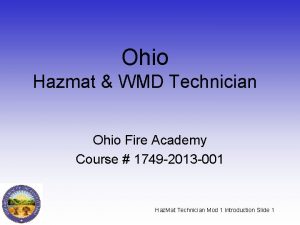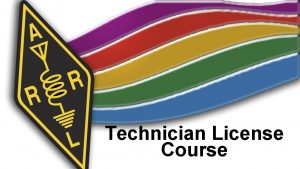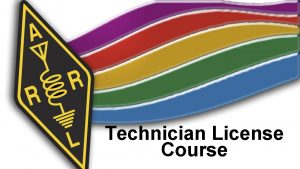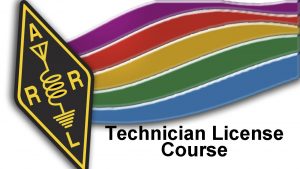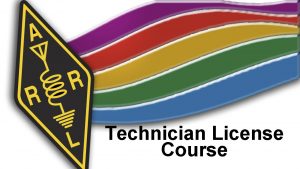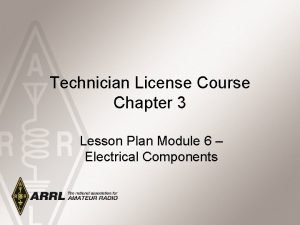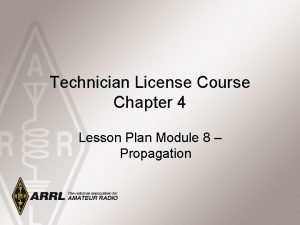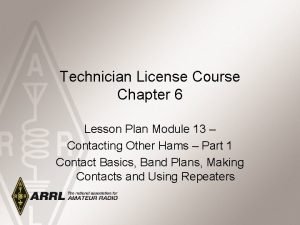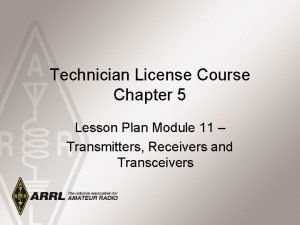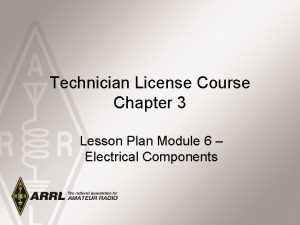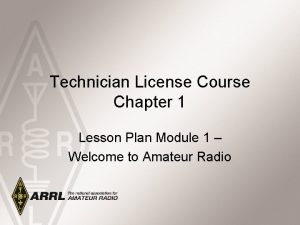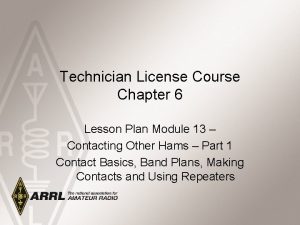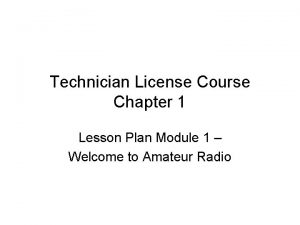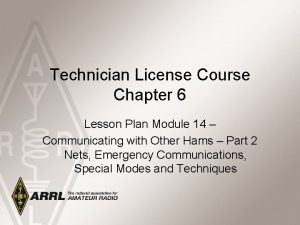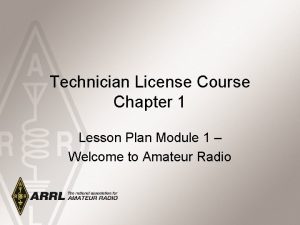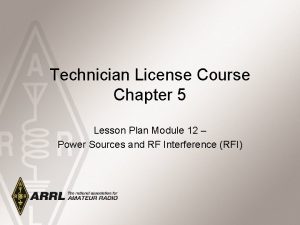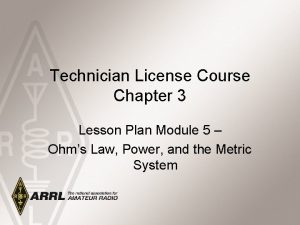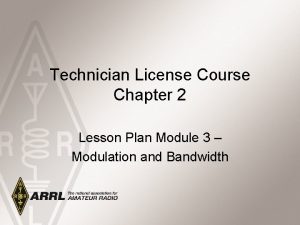Technician License Course Chapter 3 Lesson Plan Module



















































- Slides: 51

Technician License Course Chapter 3 Lesson Plan Module 4 – Electricity

Fundamentals of Electricity • Radios are powered by electricity and radio signals are a form of electrical energy. • A basic understanding of how we control electricity allows you to better install and operate your radio. 2014 Technician License Course

Fundamentals of Electricity • Electrical charge can be positive or negative. • Opposite charges attract each other • Electrical current is the flow of electrons. – Electrons are negatively-charged atomic particles, usually surrounding an atom’s positively-charged nucleus of protons (positive) and neutrons (neutral – no charge) – Electrons move in response to an electromotive force and can move independently of atoms 2014 Technician License Course

Basic Electrical Concepts • Current: the movement of electrons, measured in amperes (A) by an ammeter, and represented by I in formulas • Voltage: the amount of electromotive force (emf), also called electrical potential, measured in volts (V) by a voltmeter, represented by E or V in formulas 2014 Technician License Course

Basic Electrical Concepts • Resistance: the opposition to the movement of electrons, measured in ohms (Ω) by an ohmmeter and represented by R in formulas. • Resistance is like friction and turns electrical energy into heat when current flows. • Conductors permit current flow (low resistance) and insulators block current flow (high resistance). 2014 Technician License Course

Basic Electrical Concepts • The flow of water through a pipe is a good analogy to understand the three characteristics of electricity and how they are related. 2014 Technician License Course

Basic Electrical Concepts • Voltage from a source of electrical energy causes current to flow. • Resistance is a material’s opposition to the flow of current. • Voltage, current and resistance affect each other. For example, higher voltage (bigger push) causes more current (more flow). 2014 Technician License Course

The Two Kinds of Current • Current that flows in only one direction, is called direct current (dc). – Batteries are a common source of dc. • Current that flows in one direction then in the opposite direction is called alternating current (ac). – Household current is ac 2014 Technician License Course

The Two Kinds of Current • AC current reverses direction on a regular basis – Each process of reversing is a cycle. – The number of cycles per second is frequency, measured in hertz (Hz). • 1 Hz = 1 cycle per second 2014 Technician License Course

The Electric Circuit: An Electronic Roadmap • For current to flow, there must be a path from one side of the energy source to the other side of the source – this path is called a circuit. • There must be a pipe (conductive path) through which the water (current) can flow. • There are two types of electric circuits. • Series and parallel 2014 Technician License Course

Series Circuits • Series circuits provide one and only one path for current flow. 2014 Technician License Course

Parallel Circuits • Parallel circuits provide multiple paths for current flow. 2014 Technician License Course

Practice Questions 2014 Technician License Course

Electrical current is measured in which of the following units? A. Volts B. Watts C. Ohms D. Amperes T 5 A 01 HRLM (3 -1) 2014 Technician License Course

Electrical current is measured in which of the following units? A. Volts B. Watts C. Ohms D. Amperes T 5 A 01 HRLM (3 -1) 2014 Technician License Course

What is the name for the flow of electrons in an electric circuit? A. Voltage B. Resistance C. Capacitance D. Current T 5 A 03 HRLM (3 -1) 2014 Technician License Course

What is the name for the flow of electrons in an electric circuit? A. Voltage B. Resistance C. Capacitance D. Current T 5 A 03 HRLM (3 -1) 2014 Technician License Course

What is the name for a current that flows only in one direction? A. Alternating current B. Direct current C. Normal current D. Smooth current T 5 A 04 HRLM (3 -6) 2014 Technician License Course

What is the name for a current that flows only in one direction? A. Alternating current B. Direct current C. Normal current D. Smooth current T 5 A 04 HRLM (3 -6) 2014 Technician License Course

What is the electrical term for the electromotive force (EMF) that causes electron flow? A. Voltage B. Ampere-hours C. Capacitance D. Inductance T 5 A 05 HRLM (3 -1) 2014 Technician License Course

What is the electrical term for the electromotive force (EMF) that causes electron flow? A. Voltage B. Ampere-hours C. Capacitance D. Inductance T 5 A 05 HRLM (3 -1) 2014 Technician License Course

Which of the following is a good electrical conductor? A. Glass B. Wood C. Copper D. Rubber T 5 A 07 HRLM (3 -4) 2014 Technician License Course

Which of the following is a good electrical conductor? A. Glass B. Wood C. Copper D. Rubber T 5 A 07 HRLM (3 -4) 2014 Technician License Course

Which of the following is a good electrical insulator? A. Copper B. Glass C. Aluminum D. Mercury T 5 A 08 HRLM (3 -4) 2014 Technician License Course

Which of the following is a good electrical insulator? A. Copper B. Glass C. Aluminum D. Mercury T 5 A 08 HRLM (3 -4) 2014 Technician License Course

What is the name for a current that reverses direction on a regular basis? A. Alternating current B. Direct current C. Circular current D. Vertical current T 5 A 09 HRLM (3 -6) 2014 Technician License Course

What is the name for a current that reverses direction on a regular basis? A. Alternating current B. Direct current C. Circular current D. Vertical current T 5 A 09 HRLM (3 -6) 2014 Technician License Course

What is the basic unit of electromotive force? A. The volt B. The watt C. The ampere D. The ohm T 5 A 11 HRLM (3 -1) 2014 Technician License Course

What is the basic unit of electromotive force? A. The volt B. The watt C. The ampere D. The ohm T 5 A 11 HRLM (3 -1) 2014 Technician License Course

What term describes the number of times per second that an alternating current reverses direction? A. Pulse rate B. Speed C. Wavelength D. Frequency T 5 A 12 HRLM (2 -1) 2014 Technician License Course

What term describes the number of times per second that an alternating current reverses direction? A. Pulse rate B. Speed C. Wavelength D. Frequency T 5 A 12 HRLM (2 -1) 2014 Technician License Course

Which instrument would you use to measure electric potential or electromotive force? A. An ammeter B. A voltmeter C. A wavemeter D. An ohmmeter T 7 D 01 HRLM (3 -1) 2014 Technician License Course

Which instrument would you use to measure electric potential or electromotive force? A. An ammeter B. A voltmeter C. A wavemeter D. An ohmmeter T 7 D 01 HRLM (3 -1) 2014 Technician License Course

What is the correct way to connect a voltmeter to a circuit? A. In series with the circuit B. In parallel with the circuit C. In quadrature with the circuit D. In phase with the circuit T 7 D 02 HRLM (3 -3) 2014 Technician License Course

What is the correct way to connect a voltmeter to a circuit? A. In series with the circuit B. In parallel with the circuit C. In quadrature with the circuit D. In phase with the circuit T 7 D 02 HRLM (3 -3) 2014 Technician License Course

How is an ammeter usually connected to a circuit? A. In series with the circuit B. In parallel with the circuit C. In quadrature with the circuit D. In phase with the circuit T 7 D 03 HRLM (3 -3) 2014 Technician License Course

How is an ammeter usually connected to a circuit? A. In series with the circuit B. In parallel with the circuit C. In quadrature with the circuit D. In phase with the circuit T 7 D 03 HRLM (3 -3) 2014 Technician License Course

Which instrument is used to measure electric current? A. An ohmmeter B. A wavemeter C. A voltmeter D. An ammeter T 7 D 04 HRLM (3 -1) 2014 Technician License Course

Which instrument is used to measure electric current? A. An ohmmeter B. A wavemeter C. A voltmeter D. An ammeter T 7 D 04 HRLM (3 -1) 2014 Technician License Course

What instrument is used to measure resistance? A. An oscilloscope B. A spectrum analyzer C. A noise bridge D. An ohmmeter T 7 D 05 HRLM (3 -4) 2014 Technician License Course

What instrument is used to measure resistance? A. An oscilloscope B. A spectrum analyzer C. A noise bridge D. An ohmmeter T 7 D 05 HRLM (3 -4) 2014 Technician License Course

Which of the following might damage a multimeter? A. Measuring a voltage too small for the chosen scale B. Leaving the meter in the milliamps position overnight C. Attempting to measure voltage when using the resistance setting D. Not allowing it to warm up properly T 7 D 06 HRLM (3 -3) 2014 Technician License Course

Which of the following might damage a multimeter? A. Measuring a voltage too small for the chosen scale B. Leaving the meter in the milliamps position overnight C. Attempting to measure voltage when using the resistance setting D. Not allowing it to warm up properly T 7 D 06 HRLM (3 -3) 2014 Technician License Course

Which of the following measurements are commonly made using a multimeter? A. SWR and RF power B. Signal strength and noise C. Impedance and reactance D. Voltage and resistance T 7 D 07 HRLM (3 -3) 2014 Technician License Course

Which of the following measurements are commonly made using a multimeter? A. SWR and RF power B. Signal strength and noise C. Impedance and reactance D. Voltage and resistance T 7 D 07 HRLM (3 -3) 2014 Technician License Course

What is probably happening when an ohmmeter, connected across an unpowered circuit, initially indicates a low resistance and then shows increasing resistance with time? A. The ohmmeter is defective B. The circuit contains a large capacitor C. The circuit contains a large inductor D. The circuit is a relaxation oscillator T 7 D 10 HRLM (3 -3) 2014 Technician License Course

What is probably happening when an ohmmeter, connected across an unpowered circuit, initially indicates a low resistance and then shows increasing resistance with time? A. The ohmmeter is defective B. The circuit contains a large capacitor C. The circuit contains a large inductor D. The circuit is a relaxation oscillator T 7 D 10 HRLM (3 -3) 2014 Technician License Course

Which of the following precautions should be taken when measuring circuit resistance with an ohmmeter? A. Ensure that the applied voltages are correct B. Ensure that the circuit is not powered C. Ensure that the circuit is grounded D. Ensure that the circuit is operating at the correct frequency T 7 D 11 HRLM (3 -3) 2014 Technician License Course

Which of the following precautions should be taken when measuring circuit resistance with an ohmmeter? A. Ensure that the applied voltages are correct B. Ensure that the circuit is not powered C. Ensure that the circuit is grounded D. Ensure that the circuit is operating at the correct frequency T 7 D 11 HRLM (3 -3) 2014 Technician License Course

Which of the following precautions should be taken when measuring high voltages with a voltmeter? A. Ensure that the voltmeter has very low impedance B. Ensure that the voltmeter and leads are rated for use at the voltages to be measured C. Ensure that the circuit is grounded through the voltmeter D. Ensure that the voltmeter is set to the correct frequency T 7 D 12 HRLM (3 -3) 2014 Technician License Course

Which of the following precautions should be taken when measuring high voltages with a voltmeter? A. Ensure that the voltmeter has very low impedance B. Ensure that the voltmeter and leads are rated for use at the voltages to be measured C. Ensure that the circuit is grounded through the voltmeter D. Ensure that the voltmeter is set to the correct frequency T 7 D 12 HRLM (3 -3) 2014 Technician License Course
 Manufacturing technician license
Manufacturing technician license Manufacturing technician license
Manufacturing technician license Micro lesson plan
Micro lesson plan C device module module 1
C device module module 1 Front line leadership definition
Front line leadership definition Course module sample
Course module sample Mind map of gift of chappals
Mind map of gift of chappals Disadvantages of cavity wall
Disadvantages of cavity wall Course number and title
Course number and title Course interne moyenne externe
Course interne moyenne externe Getting a license illegally may result in
Getting a license illegally may result in Chapter 1 the new jersey driver license system answers
Chapter 1 the new jersey driver license system answers Chapter 1 the new jersey driver license system answers
Chapter 1 the new jersey driver license system answers An overall state of well-being or total health
An overall state of well-being or total health Lesson 3 a new plan of government answer key
Lesson 3 a new plan of government answer key Hardship and suffering lesson 2
Hardship and suffering lesson 2 Module 5 lesson 5
Module 5 lesson 5 Eureka math grade 6 module 1 lesson 6 answer key
Eureka math grade 6 module 1 lesson 6 answer key Practical/logistical issues in relationships
Practical/logistical issues in relationships Eureka math grade 6 module 1 lesson 1
Eureka math grade 6 module 1 lesson 1 Module eleven lesson one self check quiz
Module eleven lesson one self check quiz Eureka math algebra 1 module 1 lesson 15
Eureka math algebra 1 module 1 lesson 15 Grade 5 module 1 lesson 1
Grade 5 module 1 lesson 1 Module 15 lesson 1 central angles and inscribed angles
Module 15 lesson 1 central angles and inscribed angles Module 3 lesson 6
Module 3 lesson 6 When preparing an iv solution a technician should work
When preparing an iv solution a technician should work How long must a technician evacuating refrigerant
How long must a technician evacuating refrigerant Pros and cons of being a veterinary technician
Pros and cons of being a veterinary technician Maximo asset management scheduler
Maximo asset management scheduler Calibration technician courses
Calibration technician courses Support services career pathway
Support services career pathway Radar and sonar technician career cluster
Radar and sonar technician career cluster Technician a says that the bulb trade number
Technician a says that the bulb trade number Toyota technician certification
Toyota technician certification Micromain mobile
Micromain mobile Mtm pharmacy technician
Mtm pharmacy technician Roles of a planner
Roles of a planner Aba notes examples
Aba notes examples Surface repair technician
Surface repair technician She technician apprenticeship
She technician apprenticeship Vetenarian technician
Vetenarian technician Live technician
Live technician Carcass ultrasound technician training
Carcass ultrasound technician training Bcs level 3 award in coding and logic
Bcs level 3 award in coding and logic A csi lab technician _____.
A csi lab technician _____. Horticultural technician apprentice
Horticultural technician apprentice Acoustic warrant officer
Acoustic warrant officer Shane palmer md
Shane palmer md How to become a weatherization technician
How to become a weatherization technician Level 9 technician
Level 9 technician Technician class privileges
Technician class privileges Hazmat technician training ohio
Hazmat technician training ohio
